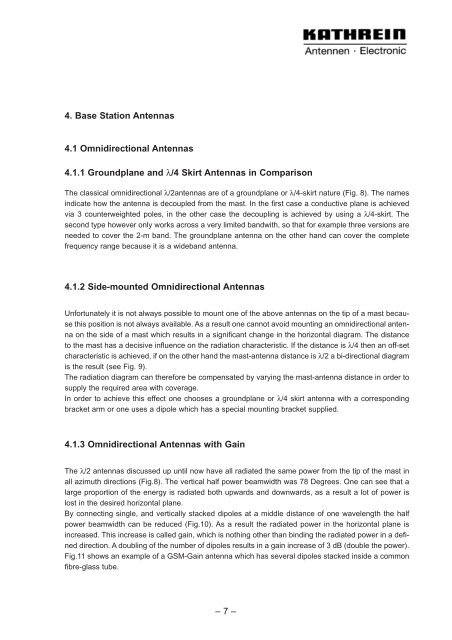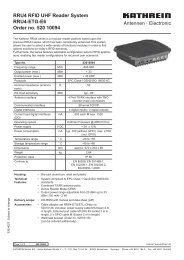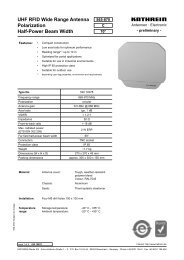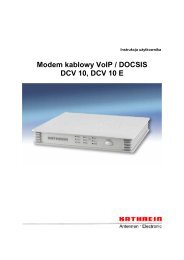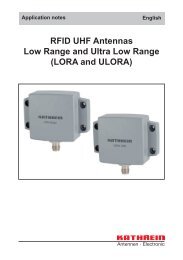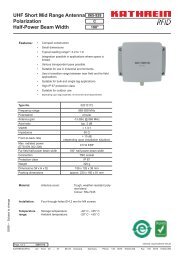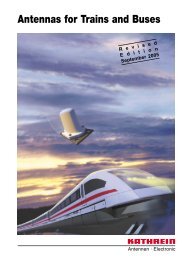Basic Antenna Principles for Mobile Communications
Basic Antenna Principles for Mobile Communications
Basic Antenna Principles for Mobile Communications
You also want an ePaper? Increase the reach of your titles
YUMPU automatically turns print PDFs into web optimized ePapers that Google loves.
4. Base Station <strong>Antenna</strong>s<br />
4.1 Omnidirectional <strong>Antenna</strong>s<br />
4.1.1 Groundplane and λ/4 Skirt <strong>Antenna</strong>s in Comparison<br />
The classical omnidirectional λ/2antennas are of a groundplane or λ/4-skirt nature (Fig. 8). The names<br />
indicate how the antenna is decoupled from the mast. In the first case a conductive plane is achieved<br />
via 3 counterweighted poles, in the other case the decoupling is achieved by using a λ/4-skirt. The<br />
second type however only works across a very limited bandwith, so that <strong>for</strong> example three versions are<br />
needed to cover the 2-m band. The groundplane antenna on the other hand can cover the complete<br />
frequency range because it is a wideband antenna.<br />
4.1.2 Side-mounted Omnidirectional <strong>Antenna</strong>s<br />
Un<strong>for</strong>tunately it is not always possible to mount one of the above antennas on the tip of a mast because<br />
this position is not always available. As a result one cannot avoid mounting an omnidirectional antenna<br />
on the side of a mast which results in a significant change in the horizontal diagram. The distance<br />
to the mast has a decisive influence on the radiation characteristic. If the distance is λ/4 then an off-set<br />
characteristic is achieved, if on the other hand the mast-antenna distance is λ/2 a bi-directional diagram<br />
is the result (see Fig. 9).<br />
The radiation diagram can there<strong>for</strong>e be compensated by varying the mast-antenna distance in order to<br />
supply the required area with coverage.<br />
In order to achieve this effect one chooses a groundplane or λ/4 skirt antenna with a corresponding<br />
bracket arm or one uses a dipole which has a special mounting bracket supplied.<br />
4.1.3 Omnidirectional <strong>Antenna</strong>s with Gain<br />
The λ/2 antennas discussed up until now have all radiated the same power from the tip of the mast in<br />
all azimuth directions (Fig.8). The vertical half power beamwidth was 78 Degrees. One can see that a<br />
large proportion of the energy is radiated both upwards and downwards, as a result a lot of power is<br />
lost in the desired horizontal plane.<br />
By connecting single, and vertically stacked dipoles at a middle distance of one wavelength the half<br />
power beamwidth can be reduced (Fig.10). As a result the radiated power in the horizontal plane is<br />
increased. This increase is called gain, which is nothing other than binding the radiated power in a defined<br />
direction. A doubling of the number of dipoles results in a gain increase of 3 dB (double the power).<br />
Fig.11 shows an example of a GSM-Gain antenna which has several dipoles stacked inside a common<br />
fibre-glass tube.<br />
– 7 –


